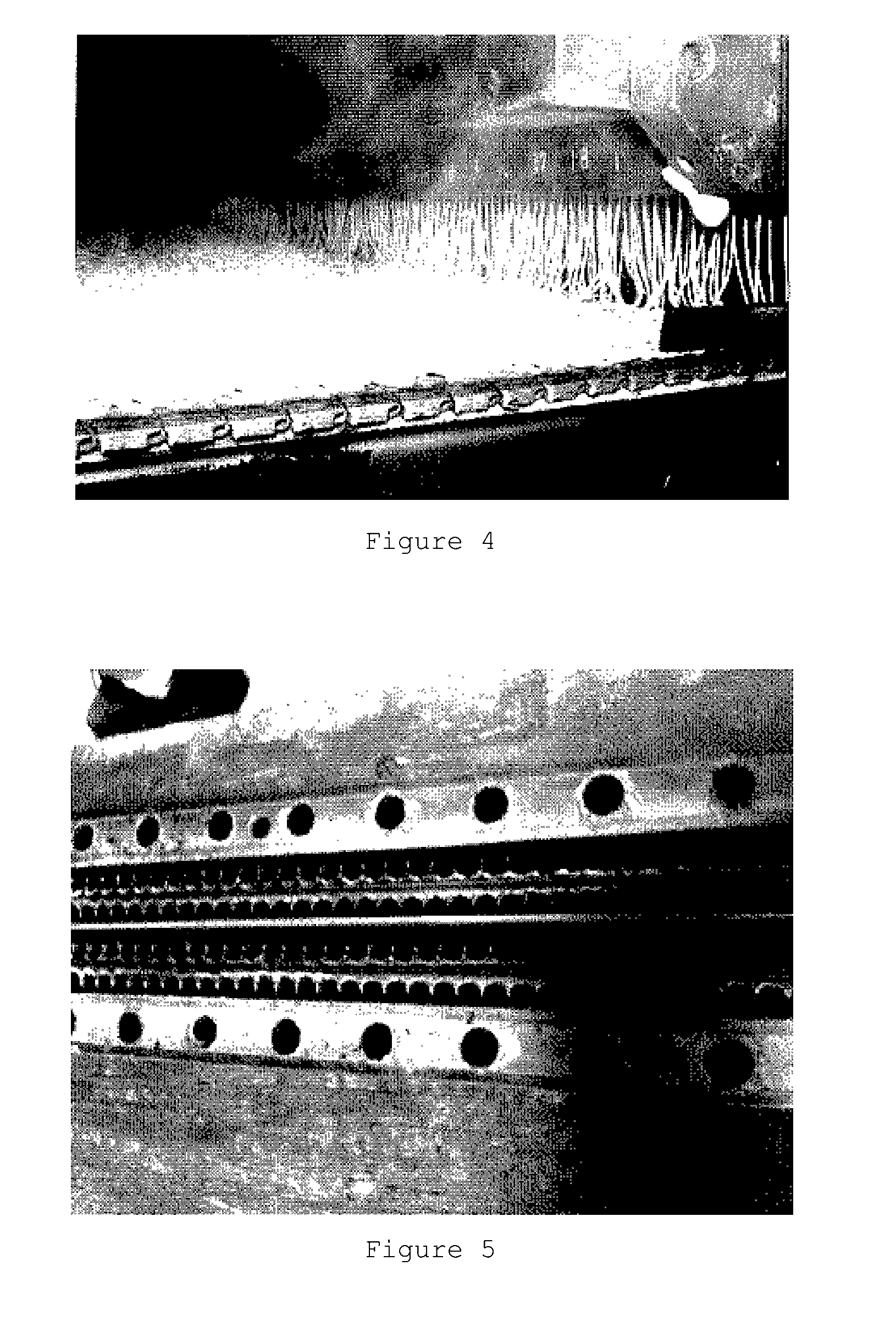Application of a random-laid web for roadway construction with improved adhesion properties
a random-laid web and roadway technology, applied in the field of sealing of roadways, can solve the problems of increasing the length and cost of sealing operation or production operation of roadway, affecting the adhesion properties of roadways, and affecting the sealing effect of roadways
- Summary
- Abstract
- Description
- Claims
- Application Information
AI Technical Summary
Benefits of technology
Problems solved by technology
Method used
Image
Examples
examples 1 to 3
Ex. 1-3
[0136]As a model of a roadway construction and for the testing of the mechanical values, three concrete slabs measuring 50×50×6 cm were each coated with Sikafloor® 161 (primer based on 2-part epoxy resin, available from Sika Schweiz AG) as concrete primer in an amount of 0.3 to 0.4 kg / m2. The primer was applied to the concrete structure with a felt roller. After an evaporation time of 12 hours, Sikalastic® 851 (2-part, solvent-free, fast-curing polyurethane) was sprayed on mechanically using a 2-component high-pressure spraying unit, to give a liquid-polymeric film (film thickness about 2.0 mm). Subsequently, after a waiting time of 2 hours, Sikafloor® 161 (primer based on 2-part epoxy resin, available from Sika Schweiz AG) was applied by felt roller as a polymeric primer in an amount of 0.4 kg / m2.
[0137]The random-laid web composed of the adhesive composition as described above was then applied in an amount of 0.73 kg / m2 to the polymeric primer, which was still tacky. After a...
reference examples 1 to 3
Ref. 1-3
[0138]The production of the models of a roadway construction was repeated with three concrete slabs as per examples 1 to 3, but with the adhesive composition applied not in the form of a random-laid web but instead in the form of pellets, likewise in an amount of 0.73 kg / m2 to the polymeric primer which was still tacky.
Evaluation
[0139]After cooling, the models as per examples 1 to 3 and as per reference examples 1 to 3 were tested after one day for the strength in N / mm2 in accordance with standard EN 13596 and for the shear strength (“SF”) in accordance with standard EN 13653, and the fracture mode obtained was assessed visually. In all cases, fracture was always found either within the asphalt layer (close to the boundary) or in the boundary phase between the adhesive composition and the asphalt. The results obtained accordingly are summarized in tables 2 and 3 below.
TABLE 2Test results for the strength in [N / mm2].Ref. 1Ref. 2Ref. 3Ex. 1Ex. 2Ex. 3Area [mm2]24962756286227562...
example 4
[0141]An adhesive composition was produced with the ingredients identified in table 4 in the proportions specified there.
TABLE 4wt %EsterTerpolymer of ethylene, acrylic ester33.20and maleic anhydrideHydrocarbonTackifier resin10.00resinChalkFiller54.40AralditeEpoxy resin2.00OBSHBlowing agent0.40100.00
[0142]From the composition, pellets and a random-laid web were produced as for the composition described in table 1. Examples 1-3 and reference examples 1-3 were repeated analogously, using the composition of table 4 rather than the composition of table 1. Evaluation took place in the same way as for the composition of table 1, and the results obtained were similar.
PUM
| Property | Measurement | Unit |
|---|---|---|
| Softening point | aaaaa | aaaaa |
| Softening point | aaaaa | aaaaa |
| Volume | aaaaa | aaaaa |
Abstract
Description
Claims
Application Information
 Login to View More
Login to View More - R&D
- Intellectual Property
- Life Sciences
- Materials
- Tech Scout
- Unparalleled Data Quality
- Higher Quality Content
- 60% Fewer Hallucinations
Browse by: Latest US Patents, China's latest patents, Technical Efficacy Thesaurus, Application Domain, Technology Topic, Popular Technical Reports.
© 2025 PatSnap. All rights reserved.Legal|Privacy policy|Modern Slavery Act Transparency Statement|Sitemap|About US| Contact US: help@patsnap.com



